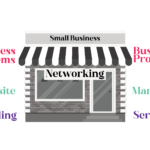
When the time comes to sell your business, you’re selling a lot more than tangible assets like premises and product.
You’re selling potential, in the form of return on the business’ current activities. You’re selling plans for new product development and new routes to market. And you’re also selling brand – both the employer brand you’ve developed among your talent pool, and the audience-facing brand that exists in your consumers’ perceptions. Consciously building your brand is, of course, something you should be doing anyway. It’s good practice whether you’re selling your business or not – strong brand values mean a more valuable and thus more profitable brand.
What is a brand?
A brand is so much more than the way your business looks. It is everything from your marketing collateral to the customer experience you provide and beyond. Basically, your business’ brand is the way your audience perceives your business.
All businesses have a brand, even if they’ve made no effort to build or manage it, and everything a brand does builds equity – significance and impact that attaches to the business’ name. This equity may be positive or negative – the more positive equity your brand has built up, the more value it’s adding to your business.
A positive and valuable brand is an enormously powerful negotiating tool. When Tesco and Unilever fell out over recommended retail pricing in 2016, undermining share practices and infuriating the public, it was the brand equity attached to Unilever’s products – especially Marmite – that broke the deadlock. Tesco had too much to lose by not having Marmite on the shelves: they, and their customers, ended up eating the price hike.
How brand adds value to a business
Brand values – the core values of an organisation which resonate through its operations, its messaging and its interactions with the customer base – are central to a brand’s value. Brand values affect the brand’s positioning in the marketplace – where it stands in relation to its competitors, and how well the customer in the street (or online) recognises that. They’re evident in the coverage the brand receives, especially value-added editorials and reviews that position the brand favourably against competitors or in response to customer needs.
It’s one thing to put together an old-school packet for your sausages and lay claim to the appearance of being a traditional butcher. It’s another to actually run an artisan high-street butcher that takes the historical experience cachet of London’s Borough Market, expands into carefully chosen retail locations, and passes on your knowledge of traditional farming, butchery and cooking to customers. The Ginger Pig get this: that’s why they’re turning over £15.6 million despite only owning seven actual retail locations.
How to build a more valuable brand
Brand building had to start at the top. You, as the owner of the business, have to set the core values, and ensure that the rest of the business shares them. This starts with recruitment. Do potential new hires get it? Do they understand how your brand does business and why? If they don’t – don’t hire them. And that goes for everyone from the admin staff to the C-suite. Your own people need to be on the right page.
With this understanding in place, you will be able to outline the key qualities and benefits your brand offers. These unique selling points are the cornerstones of your brand, and you need to know them in detail and with clarity before moving on to brand elements like tone of voice, visual identity and vocabulary.
There will always be brands with bigger budgets and more resources to hand – but your products, services and benefits belong solely to you. By spending time on honing your value proposition (a simple statement of the value you offer customers, to communicate to them why they should buy your products or services), and your marketing plan (who you’ll target and how you’ll reach them) and putting effort into quality content and networking over flashy premises and piles of brochures, you can make a limited brand budget go a long way. This is all the more important when you’re looking to maximise profit margins and present the most attractive package to potential business buyers – there’s no sense in spending more than you have to.
A strong brand leads to sustained company success, adding significantly to the sale value of a business. Follow our advice to build your brand and it’ll be worth more when you come to sell.
By Clare Methven, Founder and Joint Managing Director of The Marketing Centre
 About the author
About the author
Clare spent many years as a marketing consultant for big name brands including Jewson, Barratt and The Homes and Communities Agency and headed a team of 60 at London agency Phoenix plc. However there was a clear gap in the market that an agency could not serve;
The Marketing Centre was formed to provide senior level marketing experience and expertise to smaller ambitious businesses. It is now the UK’s fastest growing provider of part-time marketing directors to ambitious businesses.
http://uk.linkedin.com/in/claremethven







